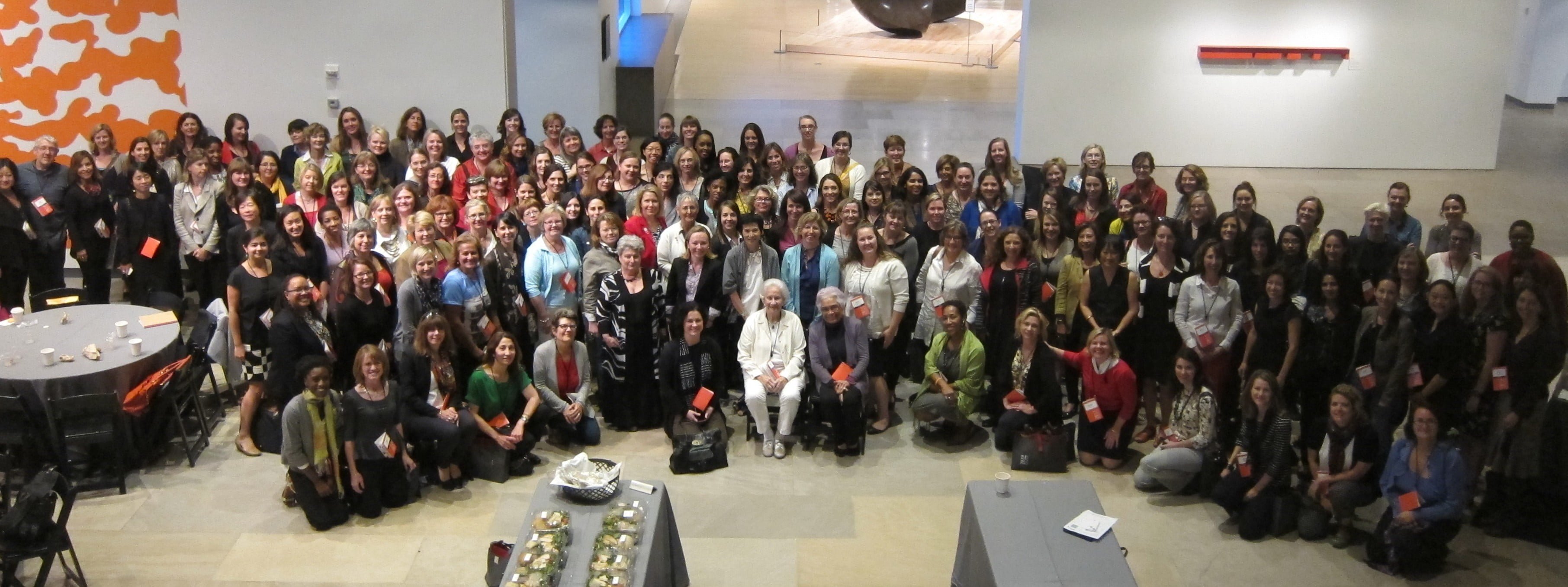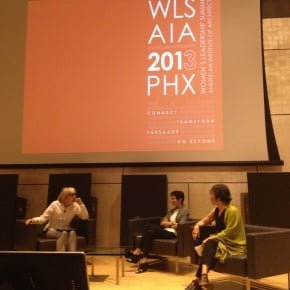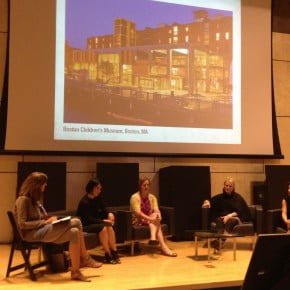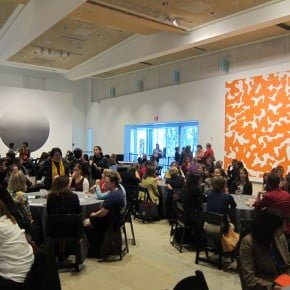More work needs to be done and soon. Emily Grandstaff-Rice reports on the American Institute of Architects’ Women’s Leadership Summit.

Delegates at the AIA Women’s Leadership Summit. All photographs Heather H. Taylor, AIA, LEED AP BD+C, Associate Principal, Payette.
Last month in Phoenix, Arizona, over 200 leaders – mostly women – gathered together to address the practice and work of women in American architecture. The occasion was the third biennial American Institute of Architects (AIA) Women’s Leadership Summit. The context is that only 18% of AIA members are female. Momentum had been building since the initial summit in 2009 and participants included principals, educators, owners, designers, environmentalists and innovators. The depth and range of speaker expertise was staggering and left no doubt that there are smart, intelligent women doing productive, innovative work in the profession. However, some of the larger societal questions – such as that posed by AIA 2015 President-elect Elizabeth Chu Richter, “do we keep practicing the same way we have in the last fifty years?” – had to be left unanswered, simply because those issues are too complex to fix during a two-day meeting.
Against the backdrop of downtown Phoenix, an array of carefully selected speakers tackled the theme “Going Beyond”. Panels were organised under subthemes – Educate, Practice, Own, Publics and Politics, Propel, Inspire and Engage – with three to four panelists presenting on each topic. This format provided a lens through which to view speakers’ individual careers, while also locating these in context with their peers. Open-ended dialogue occurred naturally following the presentations, highlighting common threads such as risk, personal choice, and the role of gender identity and bias. The audience-led discussion sparked great energy in the room and could have easily gone on for much longer. I found this to be a sign of both excellent programming and the desire for the group to address the gender conversation head-on to gain greater understanding of its implications for today’s leadership challenges.
- Inspire panel.
- Engage panel.
- Day two discussion.
For me, the most powerful moments were found in the stories – both those told by the speakers on stage and the individual stories of delegates, which flowed over many meals together. The summit format was carefully designed to provide moments where the participants came together in a range of ways – as individuals, in small gatherings, through medium-sized organised dinners around town, and together as a force for the presentations. These changes in scale provided participants with multi-level opportunities to network and learn. A particularly energetic moment was the “Inspire” panel, during which Julie Snow asked Hsinming Fung and Billie Tsien to each present a personal project. (Imagine all three sitting in the theatre of the Phoenix Art Museum Expansion, designed by Tod Williams Billie Tsien, in oversized, modernist leather chairs as if they were on a network TV show.) They did so with great humour and insight, bringing personal moments into the context of their professional work – whether it was an interaction with a client or the joy of watching children grow up and engaging with them as adults. It reminded me that as architects we are multi-dimensional; more than the product of our work. It reinforced that women bring a particular sensibility to the conversation about design. Billie Tsien cited her ability to be humble as a force in her work, and commented that what is important about architecture is how the building feels to a person, not the structure as an object.
In addition to humility, two other words resonated throughout the summit – risk and luck. Erin McConahey spoke frankly about the idea of a comfort zone in her work as a mechanical engineer, and as an employee, and a leader. She suggests that being a leader often means getting outside your comfort zone into a risk zone, all the while making sure you do not go so far that you are into a panic zone. For her, venturing into a risk zone correlates with knowing how to seek out the right help and support to ensure success. Billie Tsien also spoke about the importance of risk to advancing and building an innovative and relevant practice – “if you are risk adverse, have a partner that pushes you over the cliff all the time”. Many summit speakers mentioned specific individuals who had pushed them in their careers – sometimes it was simply overcoming a parent’s bias that architecture wasn’t the place for their daughters or, more positively, a strong mentor who had infused them with a love of building early in their development. When Marilyn Jordan Taylor asked herself if she was “good or lucky” to have had the opportunities she has experienced, she answered that she was lucky to have had three mentors who shaped her career. Judy Nitsch responded that often “you have to be good to be lucky”.
The goal of the summit was not to solve the inequity dilemma of why are there are not as many women leaders as there could be – to aim to solve this would have been naïve. Achieving gender balance in leadership is a multi-faceted societal conundrum that, as speaker Nancy Levinson mentioned, requires equalising professional opportunities while also eliminating specific barriers for potential leaders who get sidestepped due to their family obligations. In the opening letter to summit participants, the organisers – Diane Reicher Jacobs, Melissa Farling, and Maria Salenger – wrote, “leadership challenges are not new to many, but recent debates and provocative books and articles remind us that there is still work to be done in making our boardrooms match our classrooms.” The closing of the summit did have the sense that more work needs to be done and soon, if for no other reason than to propel outstanding professional contributions like the ones showcased throughout the event. Supporting its mission “to raise the profile and influence of women leaders within [the] field and beyond”, the Women’s Leadership Summit advanced the dialogue about women’s influence in American (and international) architecture and identified specific areas of concern to help the architectural profession towards its goal of more closely mirroring the society it serves. The outstanding question is, of course, what will each of us do to make this happen?























